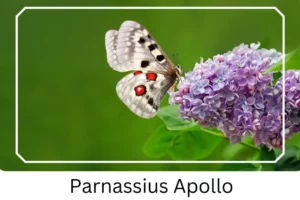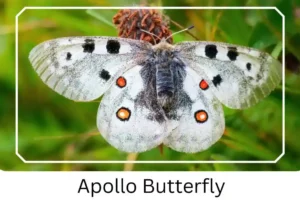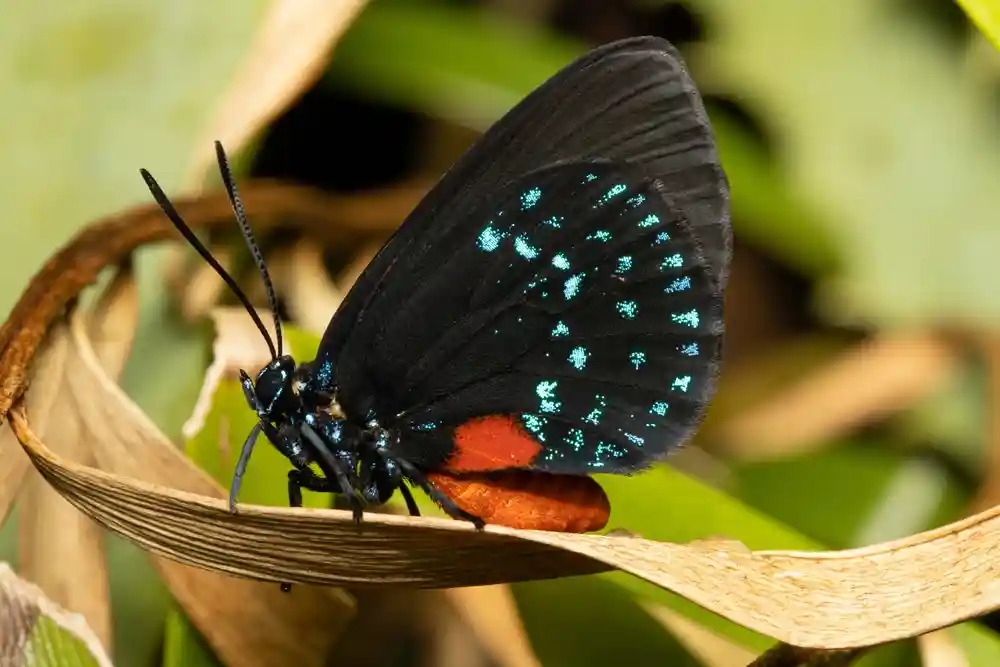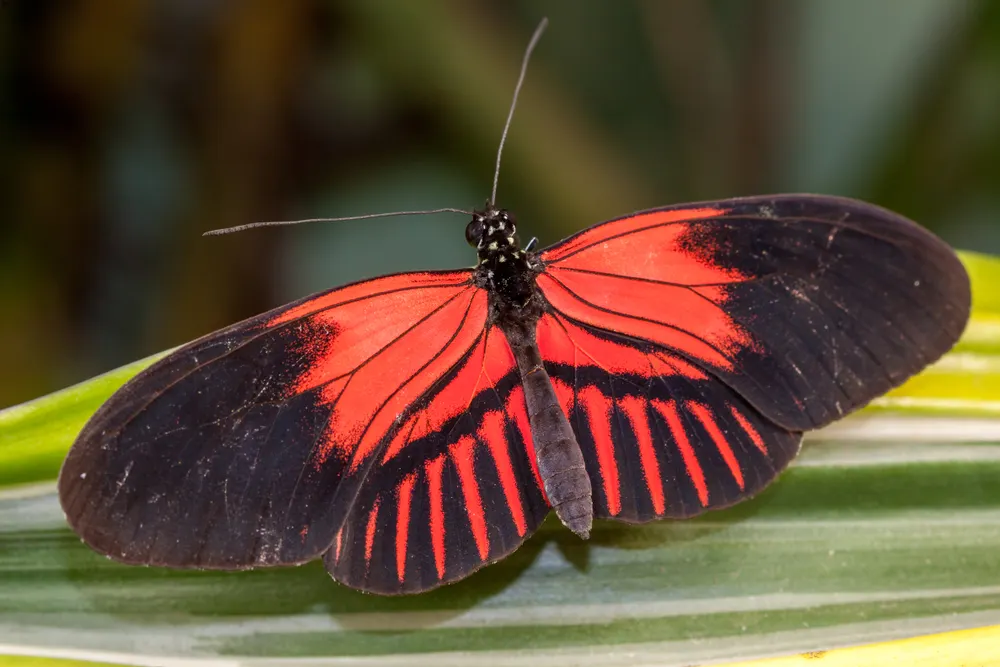Apollo (Parnassius apollo)
The Apollo butterfly, with its majestic wings and ethereal presence, stands as a marvel of the natural world. Emblematic of mountainous terrains, this species captivates the hearts of entomologists and butterfly enthusiasts alike. Known for its bright, clean appearance characterized by pristine white wings and a delicate, hairy body, the Apollo butterfly’s allure is enhanced by its diversity, with at least 23 subspecies documented globally.
Scientific Classification
- Family: Papilionidae
- Genus: Parnassius
- Common names: Mariposa Apollo
- Scientific Name: Parnassius apollo
Overview
The Apollo butterfly (Parnassius apollo) is not just any butterfly; it is a testament to nature’s artistry and evolutionary genius. Its habitat spans across continents, favoring the serene beauty of alpine meadows, rugged valleys, and pastoral landscapes. The life cycle of the Apollo, from a velvety caterpillar to a graceful adult, narrates a story of transformation and survival. This butterfly’s existence is a dance between the delicate balance of ecosystems and the harsh realities of environmental challenges. As we explore the world of the Apollo, we uncover the intricate details that make this species a fascinating subject of study and admiration.
Description and Identification
Caterpillar
The Apollo caterpillar presents a striking appearance with its velvety blue-black skin dotted with vibrant orange spots. This early stage of the Apollo’s life cycle is as visually captivating as it is crucial for its development.
Pupa
Transitioning from caterpillar to butterfly, the Apollo forms a pupa. This stage is characterized by a white cocoon with intricate black venation patterns, a marvel of nature’s design, signaling the butterfly’s imminent emergence.
Adult Butterfly
Sexual Dimorphism: In the world of Apollo butterflies, females reign in size, showcasing nature’s flair for diversity and adaptation.
Color and Appearance: The adult Mountain Apollo flaunts large black spots on its forewings and mesmerizing red eye-spots on the hind wings, set against a backdrop of white to cream. This display of colors is not just for show; it plays a vital role in the butterfly’s survival.

 Average Wingspan: The wingspan of an Apollo can range from 62 mm (2.4 in) in males to a commanding 95 mm (3.7 in) in females, a testament to the species’ grandeur.
Average Wingspan: The wingspan of an Apollo can range from 62 mm (2.4 in) in males to a commanding 95 mm (3.7 in) in females, a testament to the species’ grandeur.
Flight Pattern: The flight of an Apollo butterfly varies among subspecies, each adapted to its unique habitat, showcasing the butterfly’s versatility.
Eggs
The Apollo butterfly eggs, pearl white and textured, are as delicate as they are vital for the continuation of the species.
Quick Facts | |
| Distribution | Apollo butterflies are found in diverse regions across Asia and Europe, including countries like India, Iran, Spain, Pakistan, and Turkey. |
| Habitat | They thrive in a variety of landscapes, from flowery alpine meadows to hills, mountains, and nearby pastures. |
| Lifespan of Adults | Varies significantly based on geographic location and subspecies. |
| Host Plants | Stonecrop (Sedum species) and houseleek (Sempervivum species) are crucial for their survival. |
| Adult Diet | Primarily nectar from flowers. |
How to Identify Apollo Butterfly?
Identifying an Apollo butterfly involves looking for its distinctive features: a large wingspan, white to cream-colored wings adorned with black and red spots, and the unique texture of its eggs. Observers should note the environment, as Apollos prefer mountainous or alpine meadows rich in flora. The presence of specific host plants like stonecrop and houseleek can also be indicative of Apollo activity. When observing the butterfly, pay attention to the size difference between males and females, as well as the fading of the red eye-spots to orange in older individuals, a subtle clue to their age and subspecies.
Did You Know?
- The Apollo butterfly is named after the Greek and Roman deity Apollo, reflecting its divine beauty and the sunlight it thrives in.
- This species’ ability to adapt to various climates and elevations makes it a subject of interest in studies on climate change and habitat conservation.
Conclusion
The Mountain Apollo butterfly is more than just a beautiful creature; it is a symbol of nature’s resilience and diversity. Its existence from the velvety caterpillar to the majestic adult butterfly offers invaluable insights into the intricacies of evolution and ecology. As we continue to explore and understand these remarkable beings, we are reminded of the delicate balance of our ecosystems and the importance of preserving the natural world for future generations to marvel and learn.
Apollo Butterfly Pictures

Scientific Classification

- Family: Papilionidae
- Genus: Parnassius
- Common names: Mariposa Apollo
- Scientific Name: Parnassius apollo







